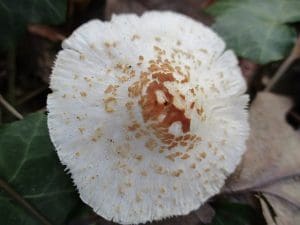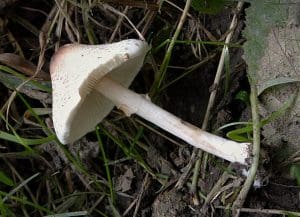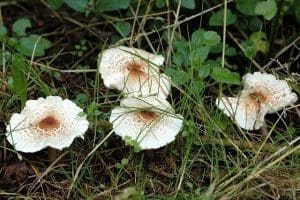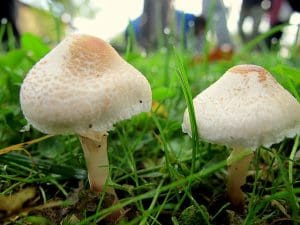Stinking Dapperling / Summer / Autumn / Toxic
Scientific Name
Lepiota cristata
Common Names
Stinking Dapperling, Stinking Parasol
Family
Agaricaceae
Habitat
They are saprotrophic, living off dead matter, they can be found in mixed woodland, parks and gardens. They can appear individually or in small groups.
Description
A fairly common and easy to identify mushroom, there are question marks around its edibility and many believe that they are poisonous, so not recommended for the kitchen.
Identifying Features:
Cap:
White to off white, covered in small red to brown scales, which get more concentrated towards the centre. Egg-shaped when very young, they flatten out with age and often become funnel-shaped when fully mature.
Up to 5cm across.

Stem:
Off white to tan in colour and smooth. The stems do have a ring but this is very fragile and is often not present.
Up to 6 cm long.

Gills:
The gills are white, very crowded and free. The gills darken slightly as the spores mature.

Smell:
Like rubber or tar hence the common name.
Spores:
White.
Known hazards
One to avoid their edibility is unknown, many of the small Lepiota’s are known to be poisonous and the smell is off putting.
Potential lookalikes
Many other small Lepiota’s can look similar but the smell should help you to ID this one. They should all be avoided.
Until recently Dapperlings were called Parasols and they do share some features but the edible Parasols for example the Parasol Mushroom (Macrolepiota procera) is much larger.
Extra Notes
The name Lepiota cristata comes from the Latin word for scale, lepis and cristata means crested both in reference to the cap surface.








Leave a Reply
You must be logged in to post a comment.